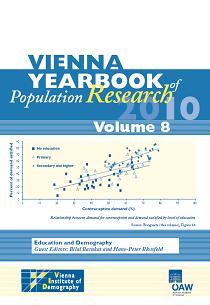
Vienna Yearbook of Population Research 2010, pp. 261-282, 2010/12/22

This article presents analytical findings on the persistence and change of the relative difference in educational attainment by ethno-cultural group and gender in Canada. As these trends cannot be observed from a single data source, a modelling technique to integrate longitudinal data lacking ethno-cultural detail with cross-sectional Census data was developed. First- and second-generation immigrants and/or members of most visible minority groups on average reach higher educational levels than their Canadian-born peers not belonging to a visible minority. This study reveals that the relative educational differences between the studied groups are both important in extent and remarkably stable over birth cohorts. The research presented in this paper was conducted in the context of Statistics Canada’s population projection microsimulation model Demosim. Demosim marks an important milestone in establishing microsimulation for official population projections. It reflects the demand for models which can go beyond age and sex, capturing geographical detail, ethnic diversity, educational attainment and other characteristics.